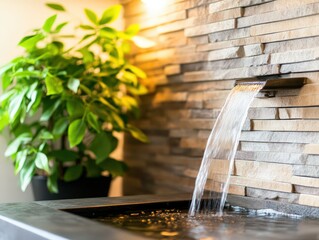The Science of Calm Environments at Home

In today’s fast-paced world, creating a calm and peaceful environment at home has become more important than ever. Our homes should be our sanctuaries—a place where we can recharge, reflect, and find balance. But did you know that the concept of a calming environment isn’t just about aesthetics or personal preference? There’s actual science behind it. Let’s explore how certain elements within your home can impact your mind and body, helping you cultivate a haven of tranquility.
Creating a calm environment at home is not just about aesthetics; it’s rooted in science. Research shows that our surroundings significantly impact our mental and physical well-being. By understanding the science behind calm environments, we can make intentional choices to foster tranquility and balance in our living spaces.
The Role of Colors
One of the most influential factors in creating a serene home is the use of color. Studies in color psychology reveal that certain hues have calming effects on the brain. Soft blues, greens, and neutral tones are known to reduce stress and promote relaxation. These colors mimic elements of nature, such as the sky and foliage, which our brains instinctively find soothing.
Lighting Matters
Lighting also plays a key role in how we feel at home. Exposure to natural light helps regulate our circadian rhythms, boosting mood and energy levels during the day.
In the evening, dim, warm lighting can signal to the brain that it’s time to wind down. Avoiding harsh, bright lights before bedtime can reduce overstimulation and improve sleep quality.
The Science of Decluttering
The clutter-free movement isn’t just a trend—it’s backed by neuroscience. Clutter can over-stimulate the brain and create an environment of chaos, leading to increased stress levels. On the other hand, organized spaces allow the brain to focus and relax. Regular decluttering helps eliminate visual distractions and creates a sense of harmony.

Incorporating Natural Elements
Biophilic design, which integrates natural elements into living spaces, has been shown to reduce stress and enhance well-being. Adding plants, wooden furniture, or water features to your home can evoke a sense of connection to nature, which has a calming effect on the mind. Even simple gestures like placing a vase of fresh flowers can transform the atmosphere of a room.

Soundscapes and Silence

Sound is another important factor in creating a calm environment. Constant exposure to noise can elevate cortisol levels, the stress hormone. Incorporating soft, soothing sounds, such as instrumental music or natural ambiance (like rainfall or birdsong), can help maintain a peaceful atmosphere. Alternatively, creating spaces for silence and quiet reflection can be equally beneficial.
Aromatherapy and Scent
The sense of smell is closely linked to our emotions and memories. Scents like lavender, chamomile, and sandalwood are known to have calming effects on the nervous system. Using essential oils, candles, or diffusers can fill your home with calming aromas that enhance relaxation and comfort.

Personal Touches
Finally, a calm environment is deeply personal. Surrounding yourself with items that hold sentimental value, such as photos, art, or heirlooms, can create a sense of security and joy. The science of calm environments isn’t about stripping spaces down to bare essentials but finding a balance that feels right for you.

Creating a calm home environment doesn’t require drastic changes—it’s about thoughtful adjustments that cater to your unique needs. By understanding the science behind what makes a space tranquil, you can design a home that nurtures your mind, body, and soul.


